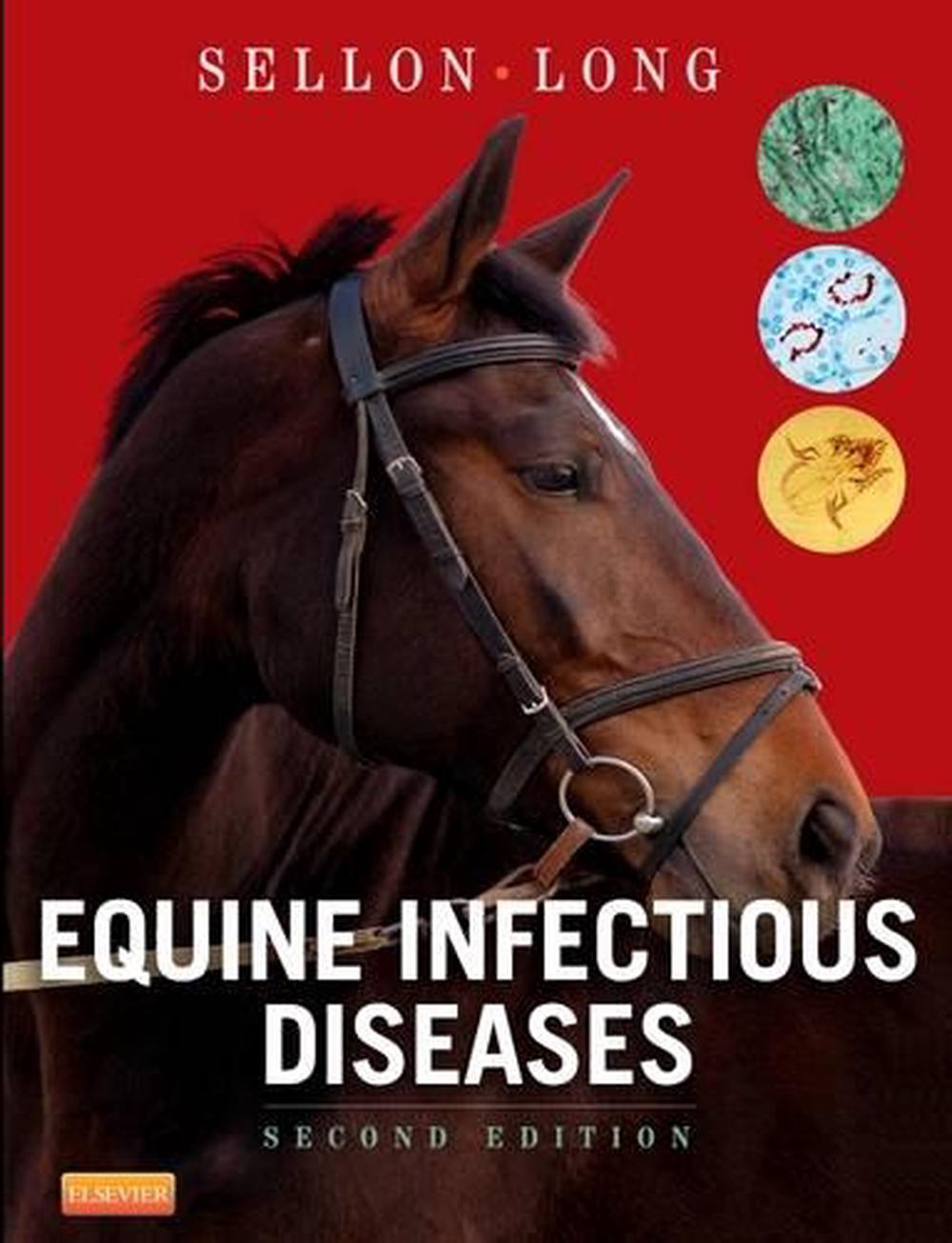
Equine Infectious Diseases
$526.93
- Hardcover
664 pages
- Release Date
27 October 2013
Summary
Ideal for both practitioners and students, Equine Infectious Diseases, 2nd Edition covers the diagnosis, treatment, and prevention of infectious disease in horses. Organized by infectious agent - viral, bacterial and rickettsial, protozoal, and fungal - it includes complete coverage of the individual diseases caused by each type of agent. A section on clinical problems offers effective treatment for conditions such as ocular infections, CNS infections, and skin infections. Preventing and cont…
Book Details
| ISBN-13: | 9781455708918 |
|---|---|
| ISBN-10: | 1455708917 |
| Author: | Debra C. Sellon, Maureen T. Long |
| Publisher: | Elsevier Health Sciences |
| Imprint: | W B Saunders Co Ltd |
| Format: | Hardcover |
| Number of Pages: | 664 |
| Edition: | 2nd |
| Release Date: | 27 October 2013 |
| Weight: | 2.15kg |
| Dimensions: | 276mm x 216mm |
What They're Saying
Critics Review
“Equine Infectious Diseases is a complete up-to-date review essential for both the general equine practitioner and the specialist, covering both common and rare infectious diseases of the horse, with an international collection of contributors from USA, Canada, United Kingdom, Germany, Denmark, Australia and South Africa.While this book is a complete and detailed review of infectious diseases in horses, with the latest information on diagnosis, treatment and control of infectious diseases, it is also easy to read, the information is clinically relevant for the practitioner and information is easily accessed. This book is highly recommended for all veterinarians involved in equine practice.“Cynthia Donnellan VBSc (hons) Mmedvet, April 2008EQUINE INFECTIOUS DISEASESAuthors: D C Sellon and M LongPublisher: SaundersThis is an extremely comprehensive and detailed reference book on infectious diseases of horses with contributions from many world renowned experts in their various fields. It covers both organ system infections and discussion of specific viral, bacterial, rickettsial, fungal and parasitic diseases and has a final section on the prevention and control of infectious diseases. Recognition, treatment and control of infectious diseases remains the cornerstone of clinical equine practice, never more so now climate change is leading to the spread of disease vectors and bringing diseases previously considered exotic to more temperate regions of the world.Inevitably, the book has a North American bias, as the editors are based at North American Universities and the majority of the contributors are based in North America. Nevertheless, this does not detract from its value as a reference book. The chapters are extremely well illustrated and include a wide variety of illustrations of clinical cases, pathological specimens and histological slides. There is extensive discussion of the laboratory diagnosis of each disease with detailed information on the biochemical characterisation of each organism. Detailed references are included on an easy to use CD-ROM.Unfortunately, given the rapidly changing nature of infectious diseases, some subjects are already out of date. For example, no mention is made of the recent Irish outbreak of Equine Infectious Anaemia and the unusual epidemiological features of this outbreak.This is an extremely comprehensive, well illustrated summary of equine infectious disease and I can thoroughly recommend it to all those who wish to obtain detailed summaries of the major equine diseases. The section on Prevention and Control of infectious diseases is particularly useful in illustrating the approach to diagnosis and control of infectious diseases, with detailed discussion of epidemiology, biosecurity and antimicrobial therapy.With the ever increasing international travel of horses and climate changes it has never been more important for equine veterinary surgeons to be alert to the possibilities of new and emerging diseases in the U.K. This book will provide an essential reference for all those wishing to be informed on both familiar and less familiar infectious diseases of horses.Reviewed by David Dugdale at Greenwood Ellis and Partners for EVJ
About The Author
Debra C. Sellon
Dr. Sellon is board certified in large animal internal medicine and has a long record of service to the ACVIM. She was the 2010 recipient of their Distinguished Service Award at the 28th annual ACVIM Forum in Anaheim, California. Sellon is currently a Professor of Equine Medicine at Washington State University and the Associate Dean of their Veterinary Medicine Graduate School. Dr. Long has an invaluable background that qualifies her to help Dr. Sellon edit the work of countless expert contributors to this title. Dr. Long has an MS and PhD in veterinary science as well as her DVM in veterinary medicine. Her research interests include several equine and large animal infectious diseases, including Ehrlichia risticii, Neospora caninum, and Toxoplasma. Dr. Long performs much of the background research that makes this book possible.
Returns
This item has a special returns policy. Please read it carefully.
Cancellations & Returns10.1 Without prejudice to any rights the Client may have under statute as a consumer,if the Client cancels an order either fully or partially, a cancellation fee may be charged. All cancellations must be made in writing. This fee will be calculated to cover any extemal or internal costs which have been incurred or committed up to and including the date of cancellation. No new external costs will be incurred or committed/contracted from the date of receipt of written notice of cancellation by Elsevier. Orders for advertisements must be cancelled in writing prior to the relevant ad space closing date, but in the event that any cancellations are made after such date, Elsevier shall be entitled to charge the full cost of the advertisement.10.2Any returns of book products shall be subject to the relevant Elsevier Company's return policy applicable to the product at the time of the return. Details of such policies will be provided to the Client upon request. Reprints cannot be returned once these have been printed.




